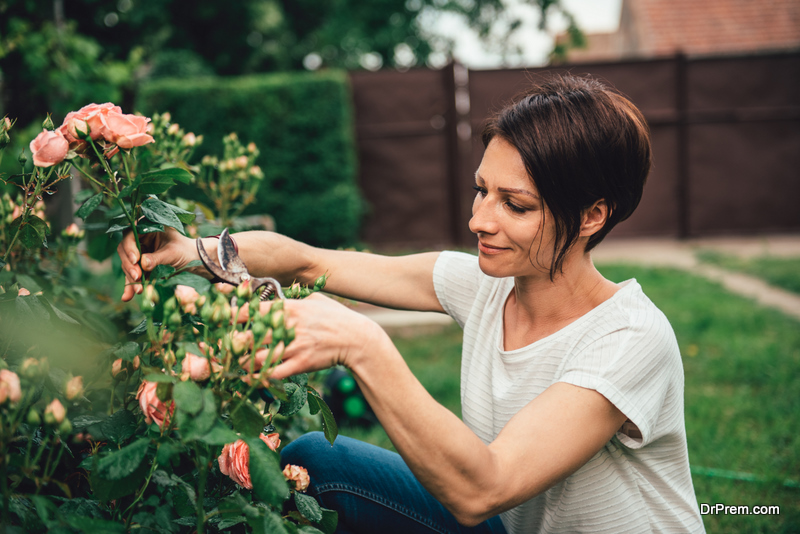A proper garden care plan brings the best out of your plants and ensures a long lifespan. But with limited sunlight a day and varied care standards for each plant, it can be overwhelming to take care of one much more than a proper garden where multiple plants may interact. Fortunately, there are general ways to practice proper garden care regardless of plant or crop species.
This article will cover the general garden practices everyone can do with different plant species. Read more below to improve your garden’s aesthetic and overall health!
1. Pick The Right Ingredients
In gardening, you can’t pick any random soil you find and use it for your plants. Understand that plants can be specific with what you put in them, from soil and water quality to compost and mulches.
The first step in lengthening their lifespan is to pair your plants with the correct soil quality. Find some books and online resources about your plants and identify what soil fits them. After that, it’s just a matter of going to your local shop and picking the said soil brand. On mulches, pick nutrient-dense and organic brands, as some mulches may contain inorganic materials that affect the plant’s longevity.
Locally made mulches may also work well with plants from your area. For example, in Australia, acacias and daisy plants are locally grown in Newcastle, so buying mulches from mulch newcastle shops or brands with similar composition makes sense.
2. Plant Disease-Resistant Variants
Another way to strengthen your garden is to plant species that fight certain diseases. Tomatoes, for example, are highly resistant to nematodes and certain fungal species. Additionally, some crops, like citrus and certain herbs, are generally avoided by disease-carrying bugs.
Look at online sources for the best plants resistant to such conditions. They would make your gardening efforts lighter. Some may even need less care than others. If you don’t have the time, you can check out some companies that offer unique plants that are bred to become resistant to most diseases and even weather conditions.
3. Examine Store Plants Before Buying
Sometimes, the best way to improve your garden is to avoid introducing sick plants. While most store-bought plants are well-cared and monitored for health, there is a trick you can do to ensure any plants you bring to your garden are healthy.
One tip is to check the roots. You can do this by gently inverting the pot and tapping it on a solid surface to bring down the roots. Most healthy plants display a rich-white color on their roots, firm and evenly spaced in their root-balls. Keep an eye out for dark spots, molds, or mushy stems, as they display a sign of rot that can spread to others if planted on a typical garden patch.
4. Consider Your Composts
Composts are nutrient-rich wastes mixed with soil that improve your plant’s health and provide a good supply of nutrition. Although most composts are made to do just that, not all are made the same.
Mixing homemade composts with their soils may not be best for dealing with sensitive plant species. Instead, buy pre-made compost from branded companies, as this compost is usually treated and exposed to high temperatures to kill off plant debris and bacteria. Using homemade compost may increase the chance of reintroducing diseases and weeds from still-living debris.
Unless your plants are highly resistant to disease, invest in pre-made or specialized composts for sensitive plants as a good starting point when caring for such species.
5. Regularly Check For Bugs
Plants suffering from bug infestations are not just an appearance issue. Some bugs carry viral diseases that could be contagious and kill your plant from the inside. That said, regularly check your plants and manually pluck out bugs usually found on their stems, leaves, and even fruits.
However, some bugs may bring benefits and even protect your plants from common insects. Specifically, ladybugs are known to feed on ordinary insect eggs and aphids, creating a symbiotic relationship where plants can provide a reliable shelter for ladybugs. At the same time, they hunt and eat invasive bugs.
6. Prune While Early
At some point, some plants show early signs of rot starting from their branches and limbs. Instead of killing them, try pruning them as soon as symptoms appear.
This is because most plants can recover from diseases as soon as you remove their damaged parts. They can spend their resources recovering and growing it stronger, minimizing cross-contamination between plants.
Pruning is so effective that some experienced gardeners prune their plants occasionally to grow more substantial branches, often splitting into two from the snipped part, making them bigger and even more beautiful.
Final Thoughts
Gardening is a skill and a great responsibility to keep your plants alive while maintaining a conducive area for growth. Doing these things requires commitment and determination and improves the state of their gardens.
The tips above are just some of the best practices expert gardeners apply daily to keep their gardens in shape. So pick your spades and composts, apply what you’ve learned, and improve your gardening skills today!
Article Submitted By Community Writer




